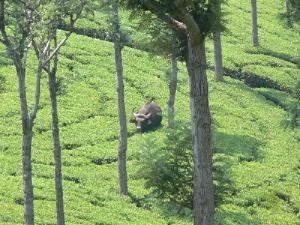Rajeev Pillay
Other projects
30 Jan 2013
Assessing Community Composition and Species Richness of Mammalian Frugivores in Bornean Twice-Logged Rainforests
We aim to combine interview-based surveys of key informants with the conceptual framework of occupancy estimation to assess recent historical changes in the distributions of large mammals in the Western Ghats biodiversity hotspot, India.

A view of pristine rainforests in the southern sub-region of the Western Ghats, home to endangered large mammals such as the tiger and Asian elephant. © A.J.T. Johnsingh
Current species assessments provide valuable information on the distribution and abundance of species at global scales but corresponding information at regional scales is lacking. The Western Ghats ranks among the most densely populated global biodiversity hotspots where 350 people/km2 live alongside some of the world's most unique and endangered biodiversity. At a landscape scale we still do not understand how, over space and time, human presence and activities have influenced the past and current distributions of wildlife. The vast area of the Western Ghats poses serious logistical challenges to documenting species distributional changes using conventional methods.

A solitary gaur (Bos gaurus) in a tea estate in the Nilgiris. Several species of large mammals.
We aim to leverage the fact that nearly every part of the Western Ghats is inhabited by local communities who can reliably identify the wildlife occurring today and that which occurred in the past. When combined with a theoretical framework such as occupancy estimation, there is immense potential to use detection/non-detection data recorded from knowledgeable key informants to estimate the proportion of area occupied by different species at different time periods. We have field-tested this method to assess changes in large mammal distributions in the 13000 km2 southern sub-region of the Western Ghats where interviews of key informants were used to record detections and non-detections of tigers and their prey at two points in time (c. 30 years ago and present).
This detection non-detection data was then used to estimate the proportion of area occupied by each species during each point in time. The results of this study in the southern Western Ghats show significant range declines for carnivores, megaherbivores, endemic ungulates and primates with tiger distribution showing a decline of approximately 27% in 30 years. Generalist ungulates and primates show persistence or marginal range expansions, possibly indicating their resilience as habitats shrink under human impact. We now aim to extend this study to the rest of the Western Ghats.